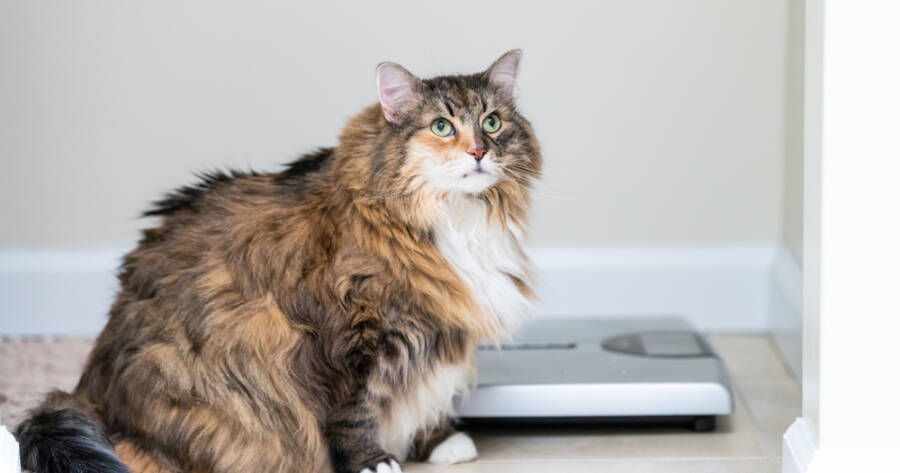Pet obesity is becoming an increasingly common issue among both cats and dogs, capturing the attention of veterinarians and pet owners alike. Just like in humans, excess weight in pets can lead to a variety of health challenges that could affect their quality of life. By focusing on balanced nutrition and regular exercise, pet owners might counteract obesity, potentially contributing to the overall well-being and longevity of their furry companions. Get to know methods and strategies to help ensure your pet maintains a healthy weight.
Understanding Pet Obesity
Before tackling pet obesity, it’s crucial to understand what qualifies as an unhealthy weight for your pet. Various factors can contribute to obesity, and recognizing them is often the first step towards effective management.
Identifying Obesity in Pets
It can be helpful to recognize the signs of obesity in pets, which might include changes in physical appearance or reduced mobility. Veterinarians generally use a Body Condition Score (BCS) to assess whether a pet is underweight, ideal, or overweight. This scale typically ranges from 1 to 9, with 4 to 5 being considered ideal for most breeds. If you notice that your pet’s ribs are difficult to feel, or they have a noticeable abdominal bulge, it may be time for a health check.
Common Causes
Several common factors could lead to obesity in pets, such as overfeeding, lack of exercise, and genetic predispositions. Additionally, certain medical conditions and medications might contribute to weight gain. Age is another factor to consider, as pets often become less active as they grow older, potentially necessitating dietary adjustments.
Crafting a Nutritious Diet Plan
Creating a balanced diet that meets your pet’s nutritional needs is a foundational step toward maintaining a healthy weight.
Consult Your Veterinarian
It might be beneficial to consult with a veterinarian to establish a diet plan tailored to your pet’s specific needs, as they might offer valuable insights into the appropriate calorie intake and nutrient balance. Avoiding table scraps and human food is typically advisable, as these can be high in calories and fat.
Portion Control and Meal Scheduling
Portion control is a critical element in managing your pet’s weight. Measuring food portions accurately and avoiding free-feeding could help to regulate calorie intake. Scheduled feeding times can also establish a routine that aids digestive health and prevents overeating.
Encouraging Regular Exercise
Exercise is vital not just for weight control but also for mental stimulation and overall health. Developing a regular exercise routine tailored to your pet’s abilities can often be the key to combating obesity.
Exercise Routines for Dogs
Dogs generally benefit from daily walks, which can be varied in length to suit the breed and age. Incorporating play, such as fetch or agility exercises, might also enhance physical activity. Engaging in consistent exercise can potentially improve cardiovascular health and strengthen muscles.
Exercise Options for Cats
Cats may require different approaches to exercise. Interactive toys, laser pointers, and climbing structures can cater to their natural hunting instincts and encourage activity. Setting aside dedicated playtime might inspire movement and interest, reducing sedentary behavior.
Monitoring and Adjustments
After initiating a weight management plan, continuous monitoring and adjustments may be necessary to ensure effectiveness.
Regular Weigh-Ins
Regularly weighing your pet will help assess the effectiveness of the diet and exercise regime and determine if adjustments are needed. Celebrating small milestones in weight loss can be motivating and affirm the current plan’s success.
Behavioral Observations
Keeping an eye on your pet’s behavior and energy levels could provide valuable insights. If your pet appears lethargic or uninterested in activities, these might be indicators that modifications to their diet or exercise routines are needed. Engaging with a veterinarian about these observations can help in fine-tuning your approach.
Avoiding Common Pitfalls
Being aware of potential pitfalls in managing your pet’s weight can foster more successful outcomes.
Treats and Snacks
While treats can be used as rewards during training, over-reliance on high-calorie snacks might contribute to weight gain. Choosing low-calorie treats or using small pieces of healthy foods like vegetables could provide alternatives without excessive caloric intake.
Breed-Specific Needs
Some breeds are more prone to obesity than others due to genetic factors, calling for specific approaches to weight management. Investigating these needs and adjusting care accordingly can offer better long-term outcomes.
Learn More Today!
Tackling pet obesity requires dedication, awareness, and a proactive approach to nutrition and exercise. While each pet’s needs and physical abilities are unique, a commitment to understanding these factors and thoughtfully addressing them can promote a healthier lifestyle.
By fostering strong partnerships with veterinarians, pet owners can explore suitable methods to help their furry friends stay fit and healthy. Implementing these strategies not only contributes to weight management but may also enhance your pet’s quality of life, leading to more joyful moments together.

